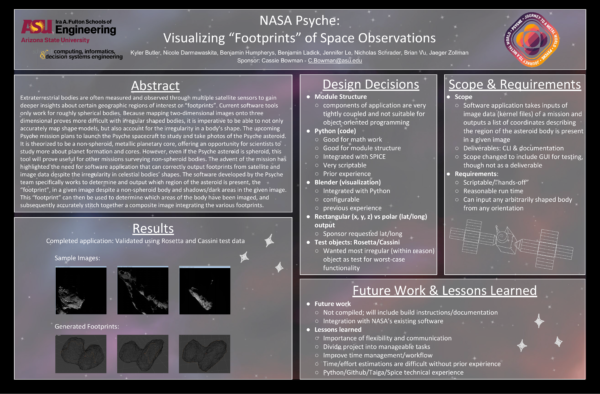Visualizing Space Data Footprints – Crater
Institution
Arizona State University (Tempe Campus)
Class
Iron Class (2018 – 2019)
Student Team
Kyler Butler, Computer Science
Nicole Darmawaskita, Computer Science
Benjamin Humpherys, Informatics
Benjamin Ladick, Computer Science
Jennifer Le, Computer Science
Nicholas Schrader, Informatics
Brian Vu, Computer Science
Jaeger Zollman, Engineering Management
Scientific & Technical Guidance
Scott Dickenshied, Scientific Software Engineer, ASU Mars Space Flight Facility
Academic Guidance
Dr. Daniel McCarville, Professor of Practice, Computing, Informatics, and Decision Systems Engineering
Dr. Ryan Meuth, Lecturer, Computing, Informatics, and Decision Systems Engineering
Dr. Ming Zhao, Associate Professor, Computing, Informatics, and Decision Systems Engineering
Project Description
In preparation for arrival at Psyche, Psyche team members proposed a capstone project to develop the functionality to calculate observation outlines for images that partially look into space. Increasingly, it will be useful for missions to asteroids and comets to be able to calculate regions on irregular shaped bodies that have been covered by a particular image, regardless of whether the body completely fills the field of view. Most of the higher-level tools available today are limited to spheroid shaped bodies and/or images that do not extend into space.

The final capstone poster for the Data Footprints -Crater team.

